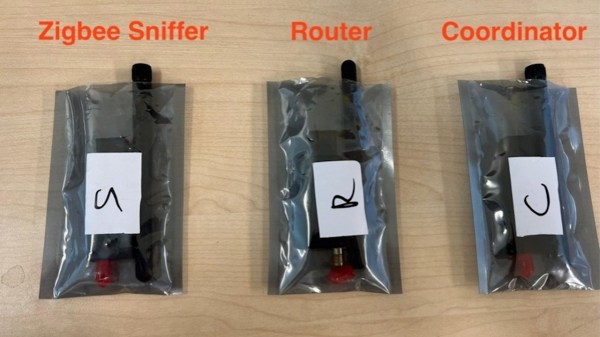This week starts off with examinations of a couple hardware attacks that you might have considered impractical. Take a Ball Grid Array (BGA) NAND removal attack, for instance. The idea is that a NAND chip might contain useful information in the form of firmware or hard-coded secrets.
The question is whether a BGA desolder job puts this sort of approach out of the reach of most attackers. Now, this is Hackaday. We regularly cover how our readers do BGA solder jobs, so it should come as no surprise to us that less than two-hundred Euro worth of tools, and a little know-how and bravery, was all it took to extract this chip. Plop it onto a pogo-pin equipped reader, use some sketchy Windows software, and boom you’ve got firmware.
What exactly to do with that firmware access is a little less straightforward. If the firmware is unencrypted and there’s not a cryptographic signature, then you can just modify the firmware. Many devices include signature checking at boot, so that limits the attack to finding vulnerabilities and searching for embedded secrets. And then worst case, some platforms use entirely encrypted firmware. That means there’s another challenge, of either recovering the key, or finding a weakness in the encryption scheme. Continue reading “This Week In Security: Hardware Attacks, IoT Security, And More”








 As [Steve] tells the story, this is one of those “boredom-buster” projects that start with a look through the junk bin to see what presents itself. In his case, some fourteen-segment common-cathode LEDs presented themselves, and the result was a simple but fun build. [Steve] used some clever methods to get the display stuffed onto two protoboards, including mounting the current-limiting resistors cordwood-style between the boards. A Raspberry Pi drives the display through a very neatly routed ribbon cable, and the whole thing lives in a tidy wooden box.
As [Steve] tells the story, this is one of those “boredom-buster” projects that start with a look through the junk bin to see what presents itself. In his case, some fourteen-segment common-cathode LEDs presented themselves, and the result was a simple but fun build. [Steve] used some clever methods to get the display stuffed onto two protoboards, including mounting the current-limiting resistors cordwood-style between the boards. A Raspberry Pi drives the display through a very neatly routed ribbon cable, and the whole thing lives in a tidy wooden box.









